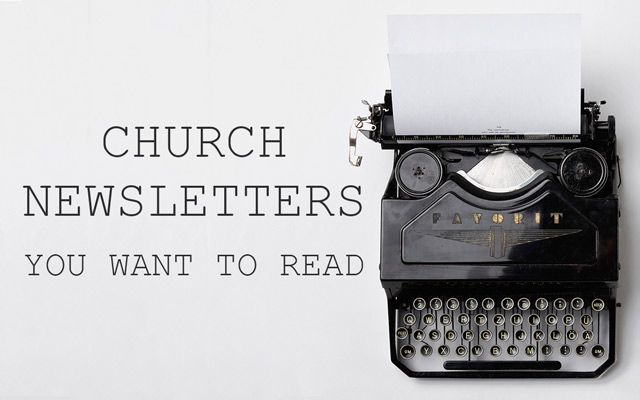You can invest hours and dollars into producing a newsletter to reach your donors, but ghastly statistics say that many of them are not being read by donors. Newsletters for churches and nonprofits can be a powerful communication tool that reaches your donors during critical seasons. Use this checklist of key tips to make sure you are creating a newsworthy newsletter:
Layout, Look and Feel
- Aesthetics matter and people are screening what they choose to read by how they viscerally react to a brand. This means your newsletter needs to reflect the brand of your organization so they immediately identity with you.
- If you don’t have the expertise or budget to do a well designed layout, there are plenty of template resources available to you like: sharefaith.com is a great resource of church templates & design.
- In addition your layout needs to be intentional and easy to follow. You’ll want to find a style that you stick with over time so your readers are quick to identify your newsletter on appearance alone.
- Electronic newsletters are most often skimmed by you readers so your message needs to be succinct and clear: strong subject line with no more than 4 stories is a good rule to follow.
The Voice of Your Newsletter
- The voice of your church newsletter is important. Your donors should be referred to as “you” and when speaking of your organization refer to yourselves as “we”. As with all good donor communication, it should be about the donor. Count the number of times you use the word “You” to make sure you are staying on track. (Read our previous article on Donor Communication for more details.)
- The overall tone should be of gratitude and thanks for how their support and involvement is making it possible for you to fulfill your mission. Remember, you are painting a picture for them to understand they are the hands and feet of your organization.
- Do not make your newsletter an appeal letter. It is important to keep these two communication pieces separate. Your newsletter should be a donor communication piece which is informing them of your stewardship of what they have given you. Don’t muddle the message by hugging them and then sticking your hand out for more.
- Keep the basics in mind: articles should be succinct, conversational, and jargon free.
Set a Schedule
- Create a schedule and stick to it! A solid standard is to email monthly, if you choose to also physically mail your newsletters keep it to no more than 4 per year (quarterly).
Track Your Success
- Qualify your time and track your open rates and engagement. There are many email solutions available which can manage the distribution and engagement levels of your newsletters. Pay attention to which newsletters receive better open rates so you can track what approach has the best engagement level.
- Survey your readers once a year and ask them how you are doing. Invite feedback on what they like about your newsletter and areas they think you can improve. This will be critical to maintaining your readership and their engagement with you.
When you are producing church newsletters or nonprofit newsletters it is important that you always measure to these best practices. This will keep your communication relevant and on target with your audience.

